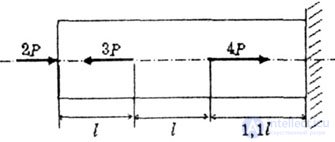Lecture
| In copromate there are several simplest types of loading and several complex ones. The simplest are the following. |
| Tension (compression) occurs in the case when the rod is loaded with forces that coincide in direction with its axis (Fig. 1.19). |
 |
| Fig. 1.19 |
| In this case, of the six internal power factors, five are zero and only the longitudinal force N # 0 (Figure 1.16). |
| Many elements of the structure work for tension, compression: truss rods, columns, rods of steam engines and piston pumps, clamping screws and other parts. |
| A shear or shear occurs when external forces displace two parallel sections one relative to the other, while the distance between them is constant (fig. 20). |
 |
| Figure 1.20 |
| For example, rivets or bolts, which fasten elements that the forces are trying to move, work on shear or shear. |
| Torsion occurs when external forces act on a rod, which form moments relative to the rod's additional axis. Of the six internal forces only McR # 0. Vapy work on torsion. spindles of turning and drilling machines and other details (Figure 1.21) |
 |
| Fig. 1.21 |
| Bending is a type of loading when external forces cause moments about the axis of symmetry (or the main axis) located in the plane of the cross section. This moment is called bending. The simplest case is a flat bend, when all external forces lie in the same plane, which in all the cases we are considering coincides with the symmetry (or main principle) of the beam. |
Comments
To leave a comment
Strength of materials
Terms: Strength of materials